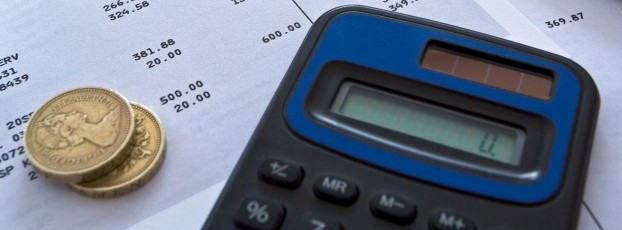
There may be a time when you need to borrow money from your own limited company. Here we look at how director’s loans are treated, and how you could face a hefty tax bill if you don’t plan any cash advances properly.
What is a director’s loan?
Aside from salary and dividends, a director’s loan is another way of taking money out of your limited company, albeit a less frequently used method than the first two. Plus, the loan is just that – it will need to be repaid.
Directors typically opt to take a loan to meet unexpected personal expenses of any nature or sometimes use them as a short-term tax-planning measure.
All the transactions which occur between a limited company and its directors are recorded in a company’s director’s loan account (DLA). You will see an entry for the DLA in your balance sheet if you use online accountancy software
You should take care before taking a loan from your company, as there are a number of tax (and legal) considerations to consider, which we explore below.
Director’s Loans – 3 taxes to consider
There are three potential taxes to consider when looking at how director’s loans work; Section 455 tax on the overdrawn loan (Corporation Tax), higher rate tax on a dividend (Self Assessment), and a benefit in kind on a director’s loan (PAYE).
Here, Patrick Gribben from Intouch Accounting takes a look at each in turn…
1. Corporation Tax
Any loans to directors (and shareholders) outstanding at the balance sheet date (your company’s period-end) have to be disclosed in the accounts and on the company tax return.
If they are not repaid within 9 months of the accounting period end then the company will pay extra Corporation Tax of 33.75% of the loans taken out (2023/4 tax year).
This extra 33.75% is repayable to the company by HMRC when the loan is repaid to the company.
Coincidentally this is the same rate as a higher rate dividend would be, but the difference is that s455 tax is reclaimable, whereas the personal tax on a higher rate dividend is not (because the loan has to be repaid whereas you can keep the dividend).
If you intend to take a loan then consider the date of the loan in order to get the maximum time before repayment becomes due.
Borrowing money on the first day of your company year will give you 21 months, whereas borrowing money on the last day of your company year will give you just 9 months.
2. Personal Tax
Dividend income falling within the higher rate tax band is taxed at 33.75% (2023/4 tax year).
This can be mitigated to some degree if you make personal pension contributions or donations to charity, as they both increase your basic rate tax band and therefore allow more of your dividends to fall into the basic rate band.
Careful planning of the exact date the dividend is payable can also help to spread dividends across tax years.
3. PAYE
Any interest-free, or low-interest loans, over £10,000 will result in a taxable benefit in kind, and you’ll pay tax on the deemed value of any interest you’ve saved. You will also have to declare the loan on your Self Assessment tax return.
Keep in mind this is the total value of money you owe the company, so if you take a loan of £10,000 and then overpay your wages by £2 then the loan is £10,002 and it becomes taxable.
There is no benefit in kind if you pay interest to the company at 2% or above. This percentage changes over time. You can check the latest rate here.
Avoid ‘bed and breakfasting’ rules on director’s loans
You should avoid repaying a loan and then taking it out again soon after as it’s an obvious avoidance tactic HMRC calls bed & breakfasting.
They will see through it and tax it as if it had never been repaid. If loans are outstanding this can also delay your accountant filing the accounts until they are either paid, or you agree to the extra tax charge.
Before a rule change in 2013, to avoid the s455 charge, director-shareholders might repay an outstanding loan just before the deadline, only to secure a new loan shortly afterwards.
This practice enabled directors to potentially enjoy an interest-free loan for an extended period of time.
As a result, HMRC implemented stricter rules, particularly in cases where loan repayments of at least £5,000 are made but then additional loans of at least £5,000 are issued within a 30-day period.
In accordance with these bed and breakfasting rules, the repayments are matched against the later loans, essentially indicating that no repayment was made, and the s455 tax charge on the initial loan amount remains in effect.
Planning
Loans can be a useful tool to bridge the timing gap between when cash is required and the taxable date for dividends.
If you are likely to require cash towards the end of the tax year, and a dividend would be subject to high rate taxes, using a loan to provide cash and then repay that loan with a dividend in the late tax year postpones or removes the high rate liability.
Further reading – useful resources
- A good article from the accountancy tax body, ACCA – 10 things you should know about directors’ loan accounts.
- Read the Government’s advice on director’s loans, and the practicalities of withdrawing and repaying money to your limited company.
Recommended Contractor Accountants
- SG Accounting - Join SG and get first 3 months @ £54.50pm
- Integro Accounting - 6 months fixed fee accountancy service half price!
- Intouch Accounting - Expert advice. Maximise your take-home pay
- Clever Accounts - IR35 FLEX. Take on any contract you're offered
- Aardvark Accounting - Complete service just £76/month
